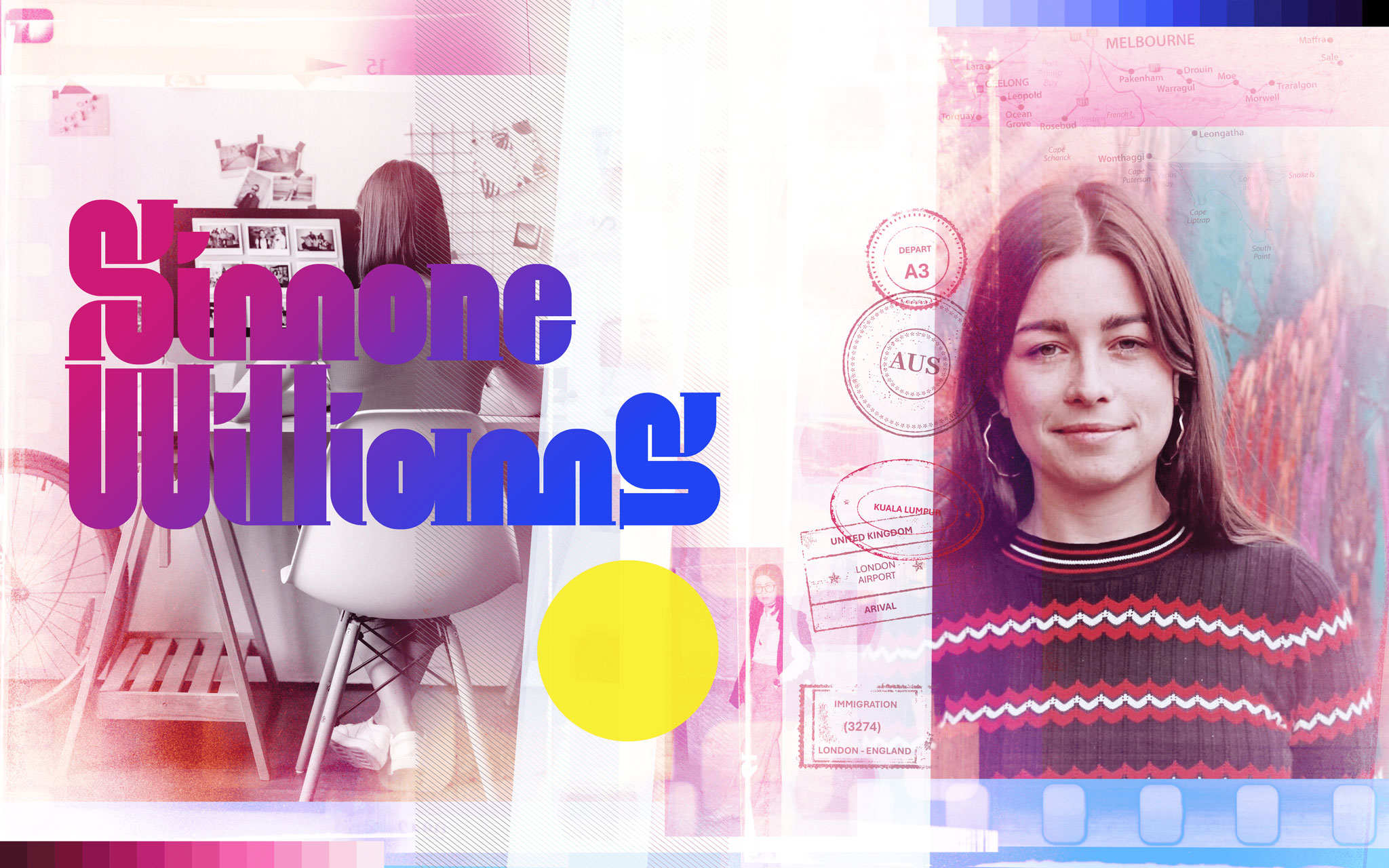Black Bauhaus
How Black and African art and culture shaped design as we know it

After the dinosaurs, after the asteroid slammed the earth and spawned walls of water traveling faster than the speed of sound, after fire, flood, and ice, they came. As a bridge to the afterlife, they created sacred masks that channeled their ancestors. Like the head, the mask was the seat of the soul. Life and death to them were twin parts of a reflecting whole. They who came were the first designers, erecting monuments to the stars and bottomless holes whose event horizon sagged time and space.
Thousands of years ago from the heart of what was once called darkness, they invented mathematics and discovered the shape of nature, creating the bases for the binary coding of computers. Their innovations were just a by-product of their culture, but when they moved, Swiss design, art, and modernism followed in their path. Their art was the foundation of Bauhaus. The abstract and geometric forms of their masks and sculptors were the perfect embodiment of “form follows function.” These are the original designers that informed your design education and shaped your career.
They were from Mali, Ghana, Egypt, the Congo, Nigeria, all across the continent of Africa, founding the first schools, building civilization’s first kingdoms and empires. These ancient architects were the color of pre-recorded time. Their skin housed drums and cosmic minds shaped like slanted discs made of glowing pearls. The solution to their survival was to leave behind a legacy, one that would populate the planet with the rich diversity of their DNA, reminding us that the earth is alive and we are extensions of it. For the African diaspora, that’s where our legacy in design begins.
To this day, the world still follows, but their paths have broadened and splintered through the electrifying illustrations of Aaron Douglas, pioneering graphic designer Dr. Cheryl D. Miller, “Architect to the Stars” Paul Revere Williams, the Black Power iconography of Emory Douglas, Mark Dean’s Gigahertz chip, the GPS tracking system of Dr. Gladys West. And don’t get me started on Microsoft designer and founder of the revolutionary Inneract Project Maurice Woods, behold cinematic prophet Arthur Jafa, the civil rights typeface of Tré Seals, fashion design hustler Dapper Dan, the way Nina, Prince, and Pharrell designed soundscapes, how Ailey danced, how Boogaloo popped, Sidney redesigned us all with that slap, Malcolm decolonized our minds.
And what about the mystical artist whose name is a mathematical equation? Prior to ChatGPT he built futuristic racers that defied the lettering of language and like the ancient architects, he conjured souls from other dimensions and struck an alien B-boy freeze just to = the late great RAMELLZEE. These are just a few of our contemporary luminaries, but there are countless others from the past, present, and the time ahead. Just as the sudden sonic boom of the big bang created the ever-expanding universe, we mastered the art of designing something from nothing.

Yes, there’s a Black design legacy but . . . , and . . .
Though we have a Black design legacy, our contributions hide in plain sight and they’re everywhere. The late Sylvia Harris, esteemed educator and a pioneer in the field of social impact design, wrote the seminal essay “Searching for a Black Aesthetic In American Graphic Design.” In it she professed, “the building blocks of a Black design aesthetic are scattered across many disciplines and will be found in unlikely places.” In the 1920’s, jazz was the hip-hop of its time. Didn’t matter your color or race, everybody’s turntable was bumping Louis Armstrong, Ella Fitzgerald, Fats Waller, Bessie Smith. King Oliver’s cornet could’ve been Gift of Gab flows. Jazz had improvisation, polyrhythms, call-and-response, and larger-than-life aspirations. The problem that the music was trying to solve was the same as every Black art form in American history, how to design ways of getting free. The hyperkinetic compositions of jazz were injected into the way you walked, talked and posted. Your inner vision of you was that cat, walking like a ball player. Duke’s big band was the zig to your zag.
The very word jazz means vitality, and vitality was big business. Jazz reached the shores of Japan, Europe and made its way back to the continent of Africa. But to sell records, concert tickets, and pack night clubs, the record covers, posters, and flyers had to reflect the music. Designers experimented with typography, overlapping and distorting letters. Typefaces emulated the spectacle of dancers Lindy Hopping under moonlight. Asymmetrical compositions and text were harmoniously integrated as a single image. Contrasting vital colors vibrated lifelines. The graphics established the principle of simplicity as a prominent design element, which would serve as a precursor to modern design. Jazz, as the ultimate social catalyst and popular source of inspiration, gave way to other paths of Black expression. There were Black-owned publications like The Messenger and NAACP’s The Crisis, who were employing Black artists as typographers and designers.
Fire!!! a Black-owned art and literary magazine, was where Illustrator Aaron Douglas designed the journal’s cover and graphics. He was one of the leading Black artists focusing on African American culture and heritage. Sylvia said Douglas and other Black artists were bucking Victorian imagery, but they were “influenced by European cubist painters, who were, in turn, influenced by African art.” Aaron’s geometric configurations intersected African aesthetics and modernist themes, exalting rhythm and duality. When people peered at his illustrations, they heard music. Silhouettes with a dream strived while a winged man sounded the horn. Bold lines were bolts of lightning. The scenes were almost science fiction-like, grounded in reality. They invoked the intensity of African sculptures whose carvings were indicative of their importance and the function that they served.

Designing against disempowering narratives
Later, while people were protesting the Vietnam war, other graphic designers like Romare Bearden, Laini Abernathy, and the highly influential Minister of Culture and Black Panther Emory Douglas produced revolutionary images as if the graphics themselves were soldiers compelling us to rage against a system that wants to keep us enslaved. And it worked, the rebellion was on. But by the 1980’s, with the Bronx on fire, gangs claiming blocks, and crack on the rise, Black designers became constellations. Outside the illumination of artificial light, they made their mark when the city that never sleeps, snored.
Great white elephants pulled up to the train yard. They are addictive lines, humming canvases, white dreams on wheels waiting to be tagged, bombed, and beautified by can controlled hands. Famed graffiti writers Dondi, Dez, Kase2, and the future and former Creative Director of Def Jam Records, Cey Adams, were kids breaking into New York City’s train yards. Mayor Ed Koch wanted them patrolled by wolves. Writers from the city’s burned out and neglected neighborhoods intricately spray painted their superhero names on the freshly white coated trains. The stems of their letters were elongated, wrapped around, and woven together, blown up bubble letters, sans-serif-like block busters took up the whole car. Arrows simulated motion. Stars elevated their altitude. Drop shadows gave depth. There were painted shout-out columns bigging up crews and homies. To writers, this was their social media. The encrypted words looked like hieroglyphics. Inside cars, tags underlying tags accumulated into a crescendo until no surface was left unmarked. The trains became art galleries snaking throughout the boroughs. These kids gave typography the ride of its life. Among breaking, DJing, and rapping, graffiti was an element of what became known as hip-hop. Today, there isn’t a major industry in existence whose design culture hasn’t in some significant way benefited from hip-hop, just as Bauhaus wouldn’t exist had it not been heavily inspired by African art.
Bauhaus is our house too
The Bauhaus movement, started in 1919, in Weimar, Germany, took the Afrocentric approach to design, bridging fine arts and practical crafts, using geometric shapes and the golden section to create harmony and balance. Designed objects would reflect its intended use. Contrasting primary and neutral tones invoked vibrancy. Clean lines encapsulated elegance and functionality. The movement was a break from traditional European design and notions of art. There isn’t any architecture, anything in your house, any car you drive, clothes you wear, or smart phone that hasn’t been touched by this school of design. Even Microsoft’s Metro design system, introduced in Windows Phone 7 and later used in Windows 8 and Windows 10, was heavily influenced by Bauhaus. The design system was meant to create a cohesive and modern look across all Microsoft products, and it has been praised for its simplicity and usability. For the last hundred years, Bauhaus has defined what designers commonly think of as great design, which is inherently African.
Don’t ever think you’re not good enough or smart enough to be where you are or where you want to be. If we’ve created and influenced all of that, just think, they’re lucky to have you.
Roche is a prolific artist and self-described shapeshifter. Nasa is a producer, rapper, engineer, and head of Uncommon Records.
Thank you to writer, designer, associate professor and co-editor of The Black Experience In Design: Identity Expression & Reflection, Anne H. Berry. Thank you to designer and host of the award winning podcast Revision Path, Maurice Cherry, Microsoft Senior Design Manager Terell Cobb and Microsoft Senior Designer Zoë Ene. I appreciate your time and knowledge in the production of this article.
Read more
To stay in the know with Microsoft Design, follow us on Twitter and Instagram, or join our Windows or Office Insider program. And if you are interested in working with us at Microsoft, head over to aka.ms/DesignCareers.


Why designers shouldn’t always be designers
A Content Designer from Microsoft Clipchamp tells her story

Design as an earthling
Connecting the outer worlds of our environment to the inner world of self
